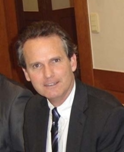USA: SEIA Publishes Road Map for Solar Heating and Cooling Policies
October 23, 2013
Under the title “Solar Heating and Cooling: Energy for a Secure Future”, the Solar Energy Industries Association (SEIA) has published a 36-page road map for solar heating and cooling in the USA (see attached document). The road map aims to increase solar heating and cooling capacity in the US from 9 GWth today to 300 GWth by 2050 (both figures including pool heating). “It’s an ambitious goal, but it’s doable,” SEIA President and CEO Rhone Resch says in a comment on SEIA’s web page.
Achieving this goal would require the installation of 100 million SHC panels over the next 35 years. Producing and installing them would altogether create 50,250 jobs, according to SEIA estimations. “Admittedly, that’s a lot of solar panels,” Resch says. With today’s figure of 30,000 solar heating and cooling systems installed each year, the US market has still a long way to go.
In addition to jobs, the road map points out other advantages of solar thermal: The solar energy yield from these collectors would allow America to cover nearly 8% of its total heating and cooling needs, reducing annual heating and cooling costs by USD 61 billion and saving USD 19.1 billion by deferring electric and natural gas infrastructure expansion and repair.
Despite many US voters support for solar energy in general, SEIA says that there is little awareness of solar thermal in particular. According to a study by Hart Research Associates quoted in the road map, 94% of Democrats, 75% of Republicans, and 89% of Independents think that the USA should develop and use more solar energy. What’s more: 78% of US-Americans support direct federal incentives to develop solar.
The road map outlines the political measures which need to be taken and the conditions which need to be established in order to achieve the goal of 300 GWth. While some are very clear (“extending the Federal Business Energy Investment Tax Credit through at least 2025 with commercial solar pools eligible”), other crucial points remain rather vague (“Unified and well-funded state and utility support programmes”). Options are described, but no figures or details have been included so far. Another recommended policy is to integrate renewable heating into any and all state Renewable Portfolio Standards, including a dedicated quota for SHC. This is rather easy wherever electric water heating is common. For example, Maryland requires electricity suppliers to have a share of 20 % of renewable energies by 2022, including a solar share of 2 %. OG300-certified solar water heaters can receive Solar Renewable Energy Certificates (SRECs) – one SREC equals 1,000 kWh of energy saved.
SEIA also recommends a widespread integration into the building code, referring to the UK where the building code requires 10 % of the energy demand of new buildings to be generated onsite from renewable sources. In addition to incentives and obligations, SEIA proposes an R&D agenda and awareness-raising programmes, workforce development and demonstration projects.
The association thinks that as a consequence of the triggered growth, solar cooling will become commercially competitive and costs for installed systems will drop by 50 %.
One important factor to facilitate cost reduction would be for solar thermal to become a mainstream technology, leading to lower costs in distributing components, issuing permissions and granting financing.
The road map was the work of a task force made up of SEIA member companies and BEAM Engineering (Boston/USA). Chair of the task force was Ole Pilgaard from the Californian collector manufacturer Heliodyne; among the participants were representatives of the SHC Alliance, the Solar Rating & Certification Corporation (SRCC) and eleven other companies from the solar thermal sector in the USA.
More information:
SEIA Heating and Cooling Division: http://www.seia.org/us-solar-heating-cooling-alliance/solar-heating-cooling-roadmap
Beam Engineering: http://www.beamgrp.com
Meister Consultants Group: http://www.mc-group.com

